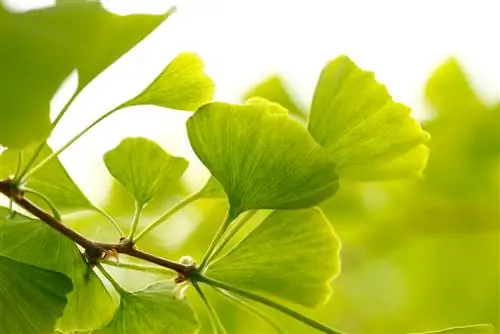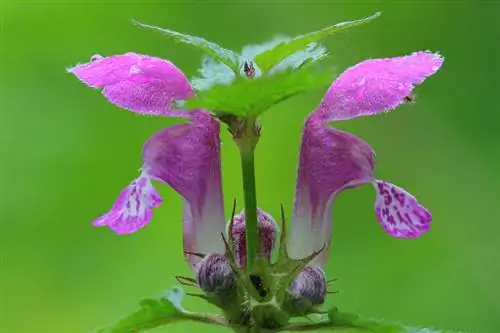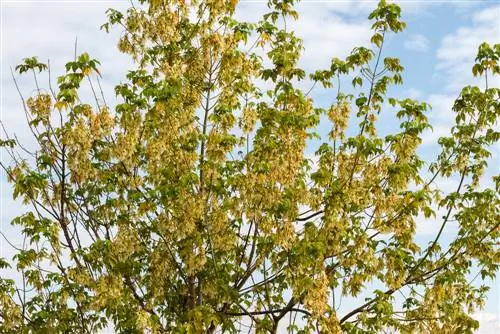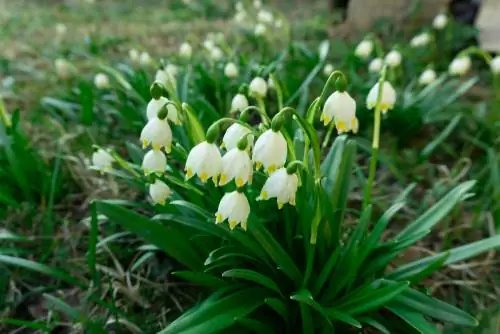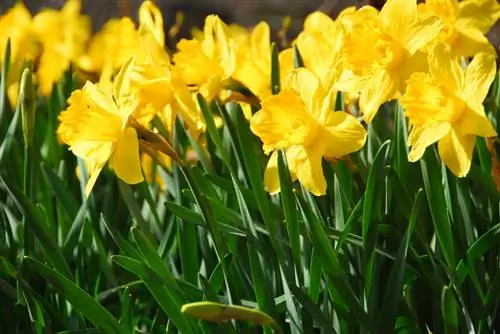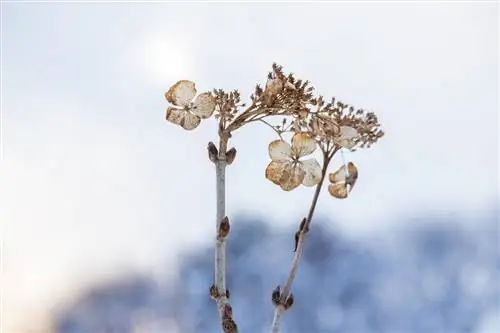- Author admin [email protected].
- Public 2023-12-16 16:46.
- Last modified 2025-06-01 06:02.
The ginkgo is certainly not unknown, at least the leaf shape is often seen in advertising for various memory aids. Not everyone is familiar with its origins and how an exotic-looking ginkgo tree is planted and cared for. The ginkgo has separate sexes, there are male and female trees.
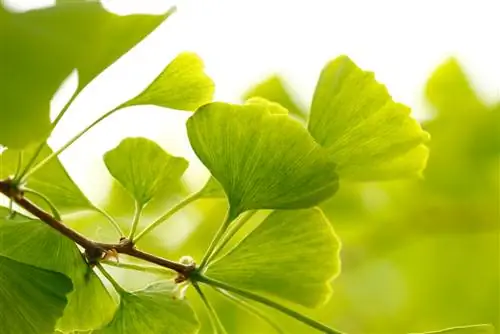
What are the most important properties of a ginkgo tree?
The Ginkgo is a deciduous, hardy tree that is suitable for the garden, balcony or terrace, but not as a houseplant. It prefers slightly loamy soils and partially shaded locations and is easy to care for, robust and resistant to diseases and pests.
The Origin
Ginkgo existed millions of years ago and also grew here in Europe back then. However, he only survived in parts of China. From there it has now found its way back into European parks and gardens as an ornamental tree and is enjoying increasing popularity.
Best conditions for a ginkgo
Ginkgo has few soil requirements and thrives almost everywhere. However, it grows particularly well on light, loamy, nutrient-rich and deep soils. It needs a lot of light, but as a young plant it cannot tolerate direct sun.
A semi-shady location from which the ginkgo can grow into the light is ideal. Since it can grow very large, a few bushes or medium-height shrubs are enough to provide shade for the young ginkgo.
The ginkgo on the balcony or terrace
Ginkgo also cuts a fine figure on the balcony or terrace. Choose a small variety and plant the ginkgo in a container or pot. Here too, you should pay attention to a sunny location. The different types of ginkgo trees hardly differ in terms of care.
Ginkgo as a houseplant - is that possible?
Ginkgo is not particularly suitable as a houseplant. Here it misses the change of seasons and sufficient winter rest. If you still want to try it, then overwinter the ginkgo in a cool place.
The Ginkgo in brief:
- not good as a houseplant
- great garden or park tree
- Cultivation on the balcony is possible
- interesting leaf shape
- deciduous
- hardy, but not as a young plant
- easy care
- robust
- resistant to diseases and pests
Tip
The ginkgo only reproduces when male and female trees are close enough together.

